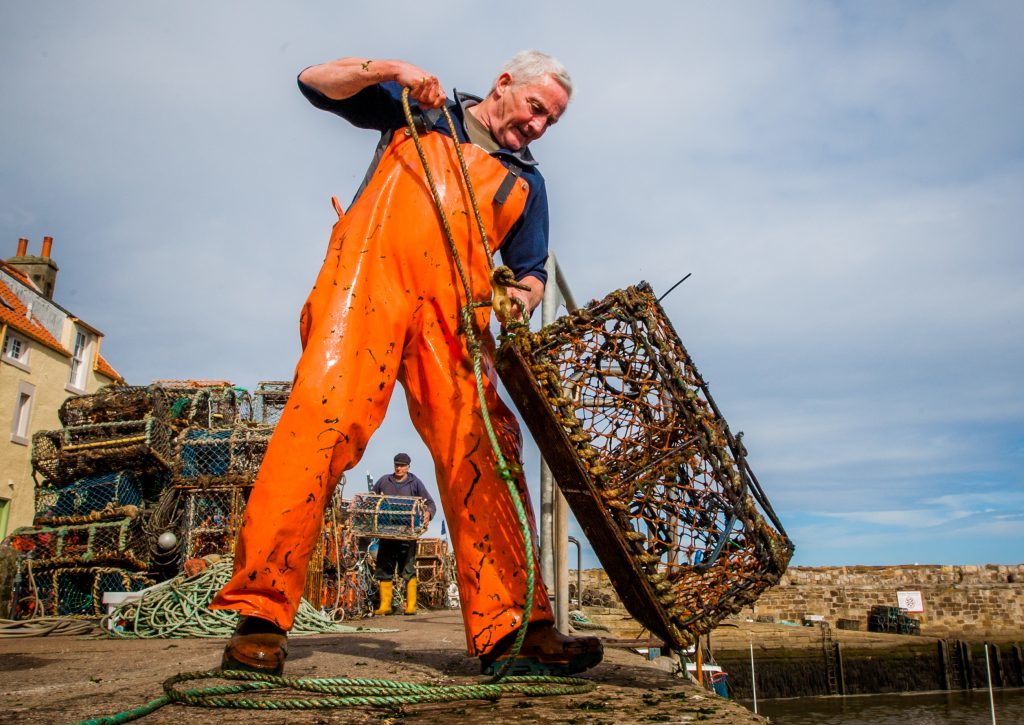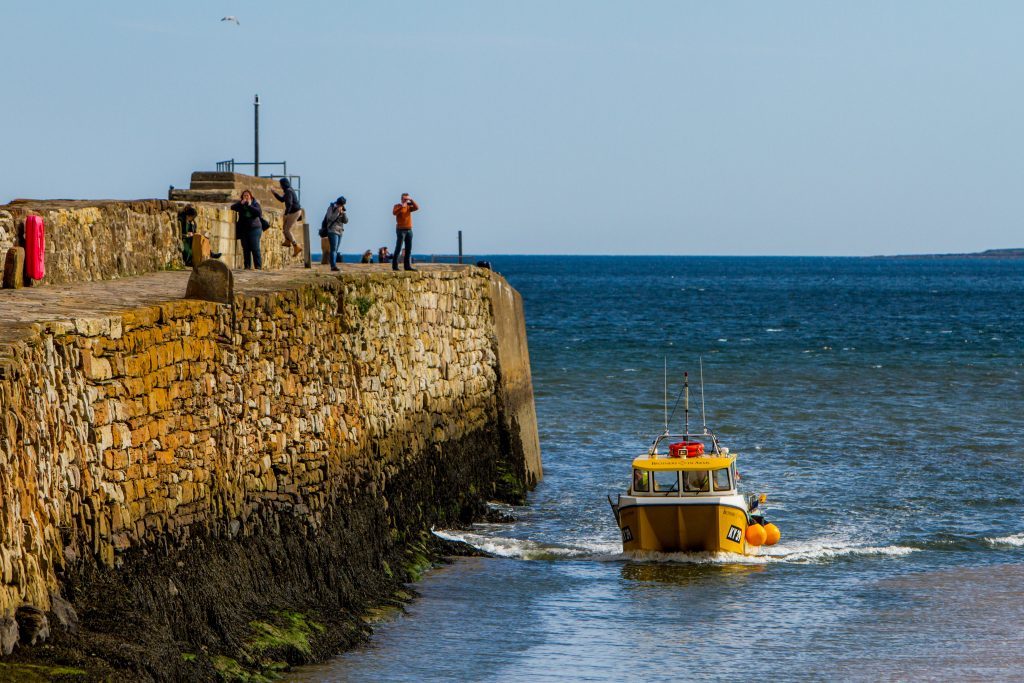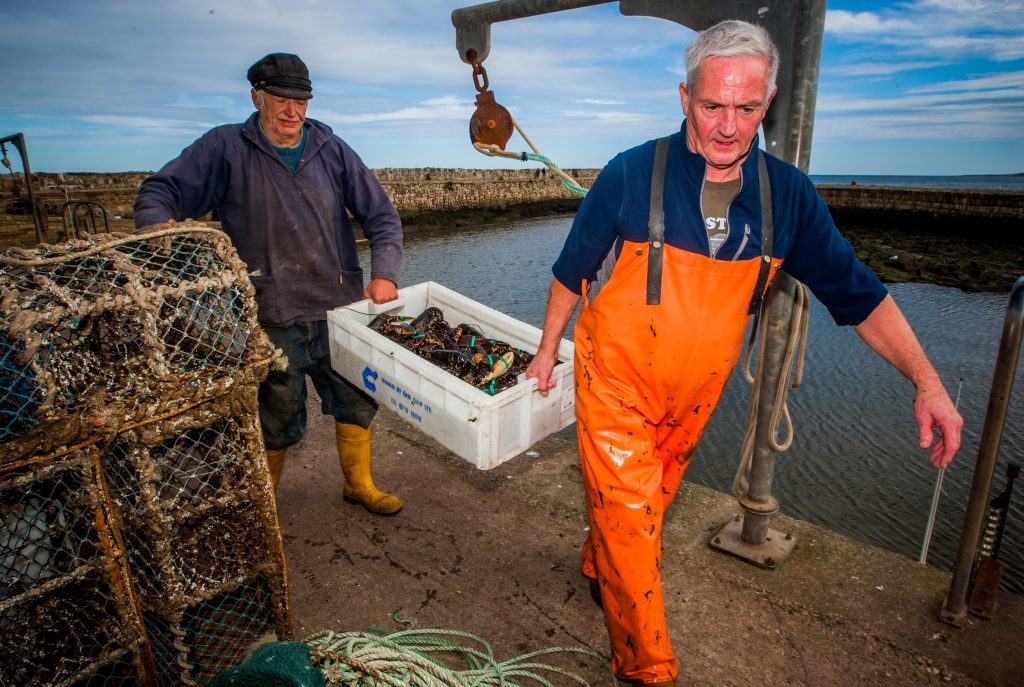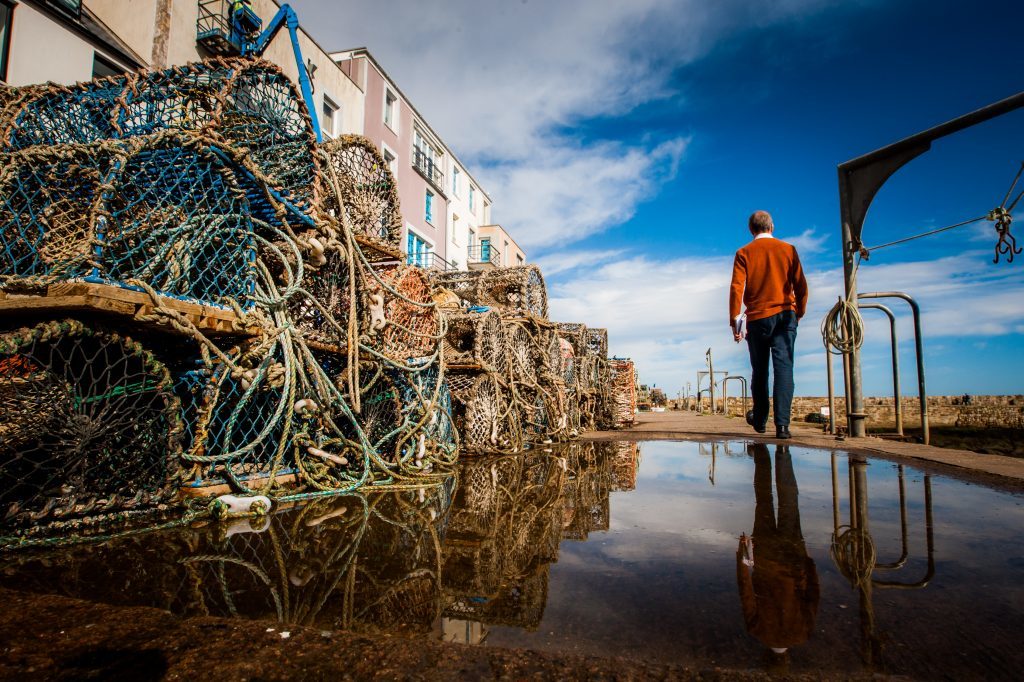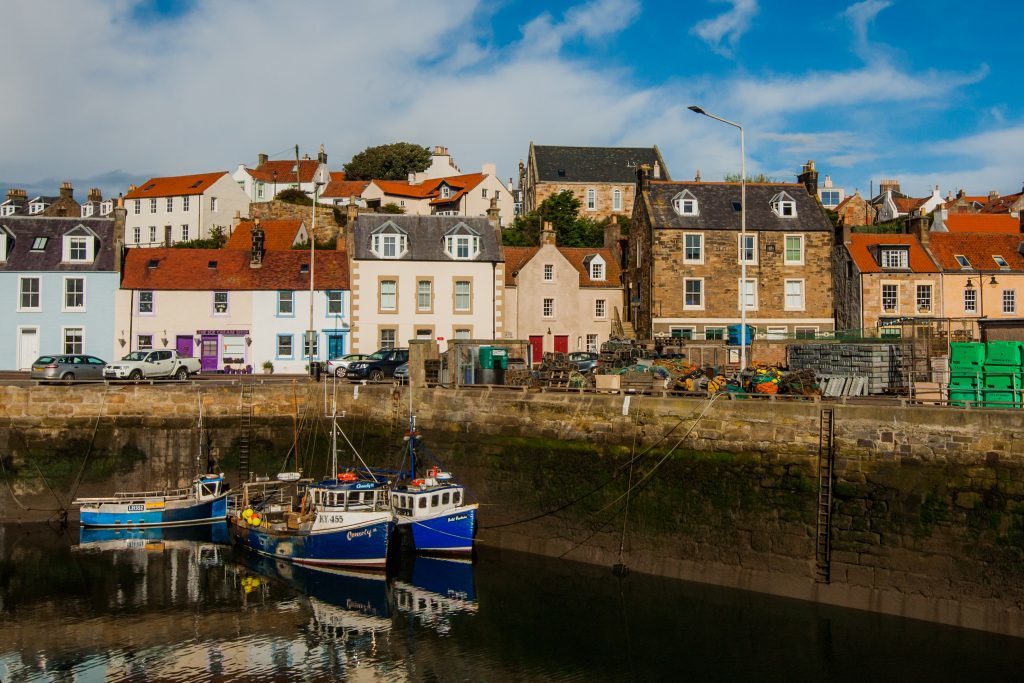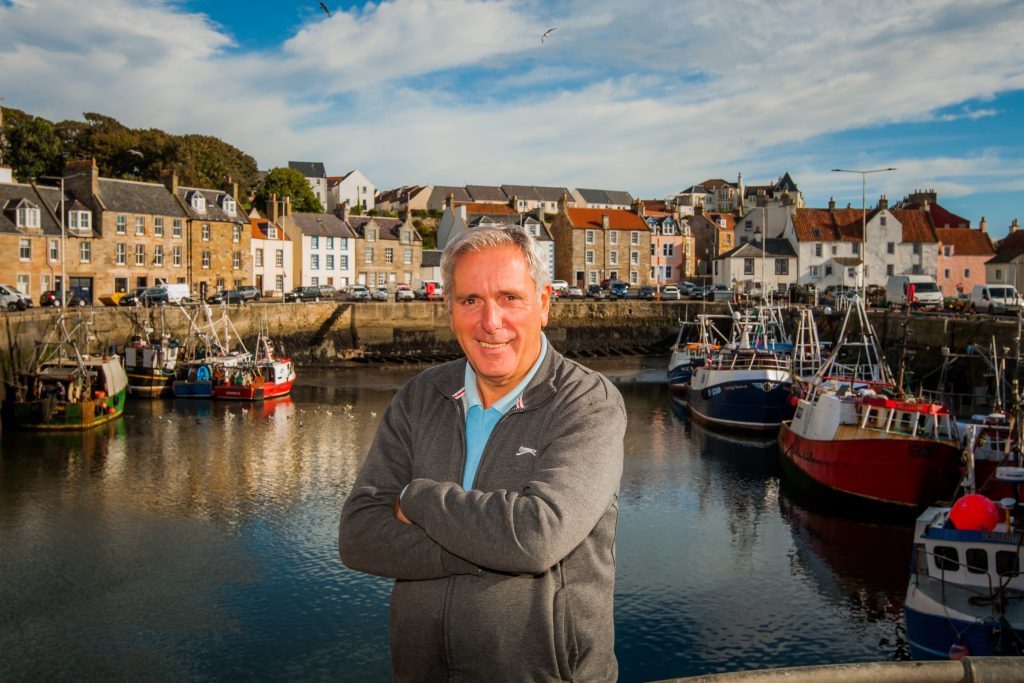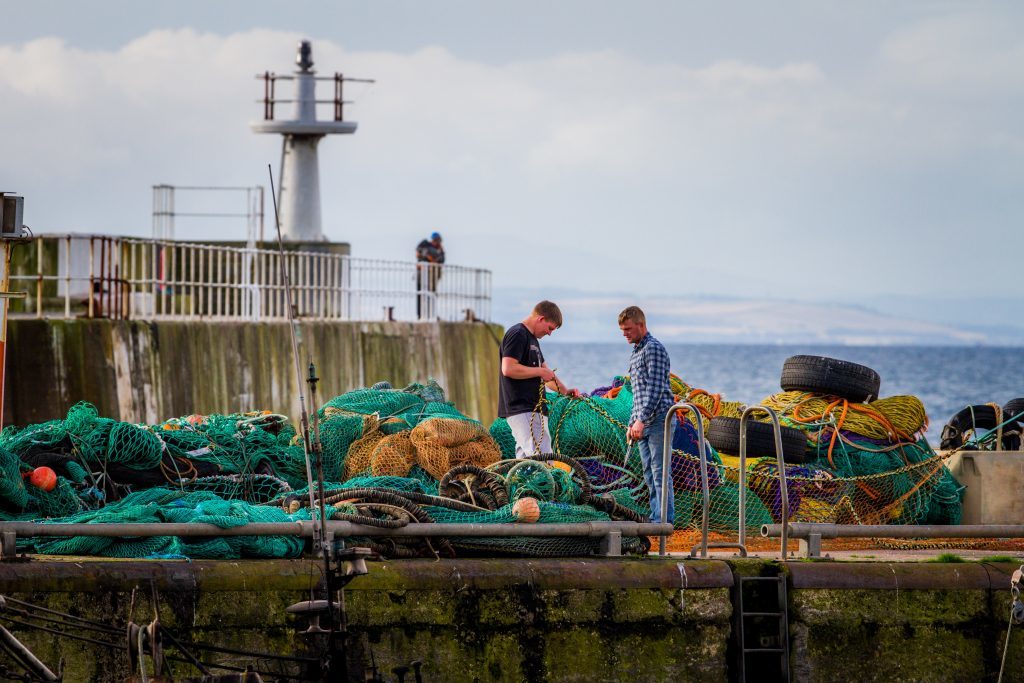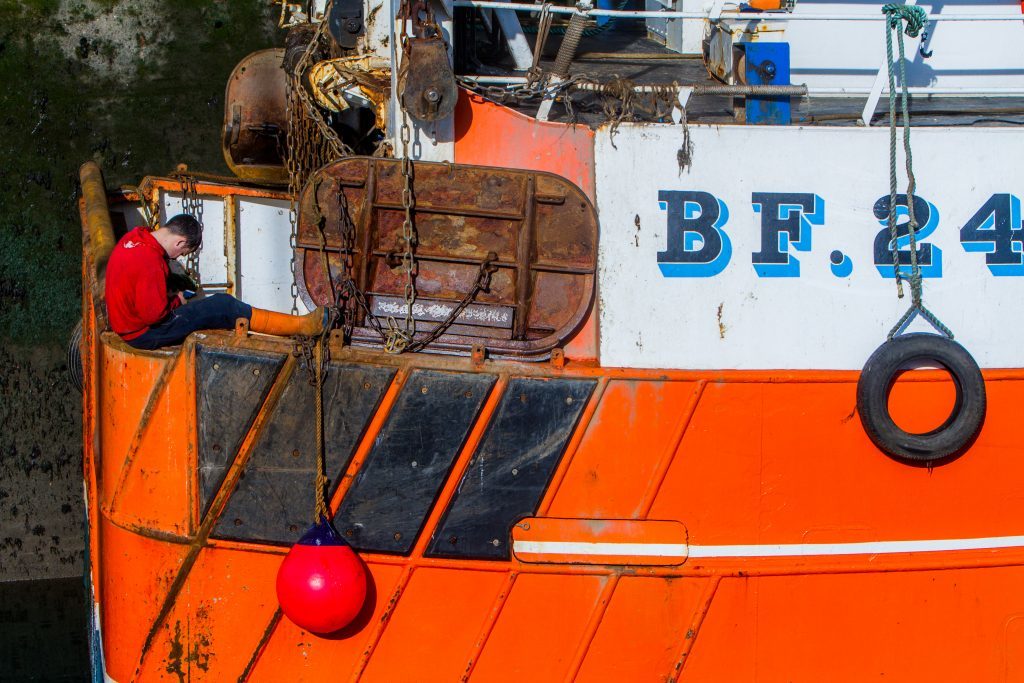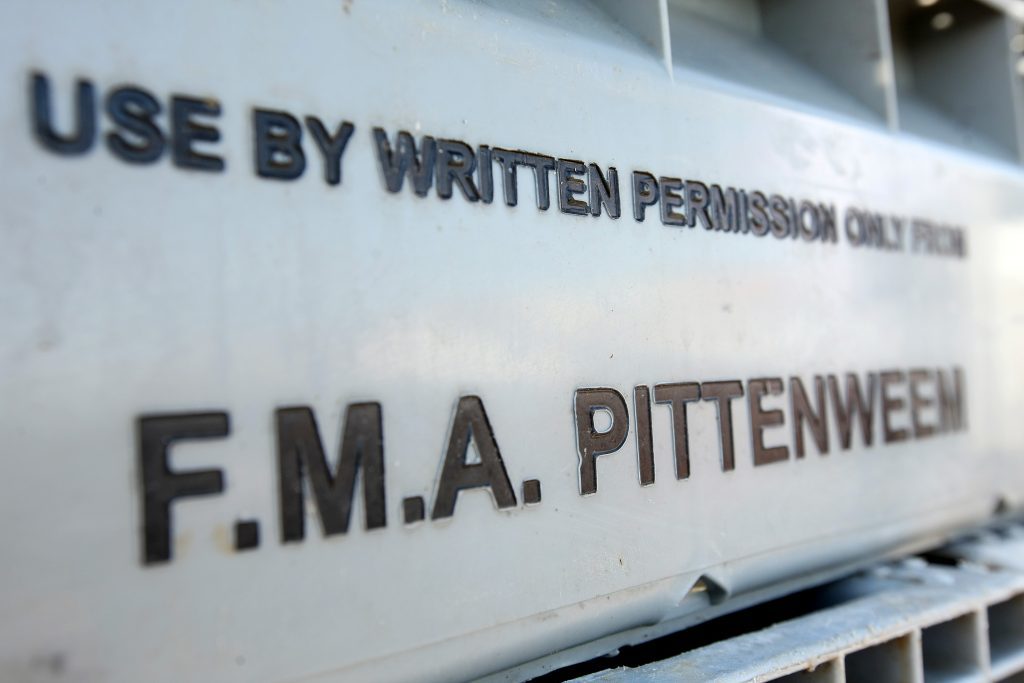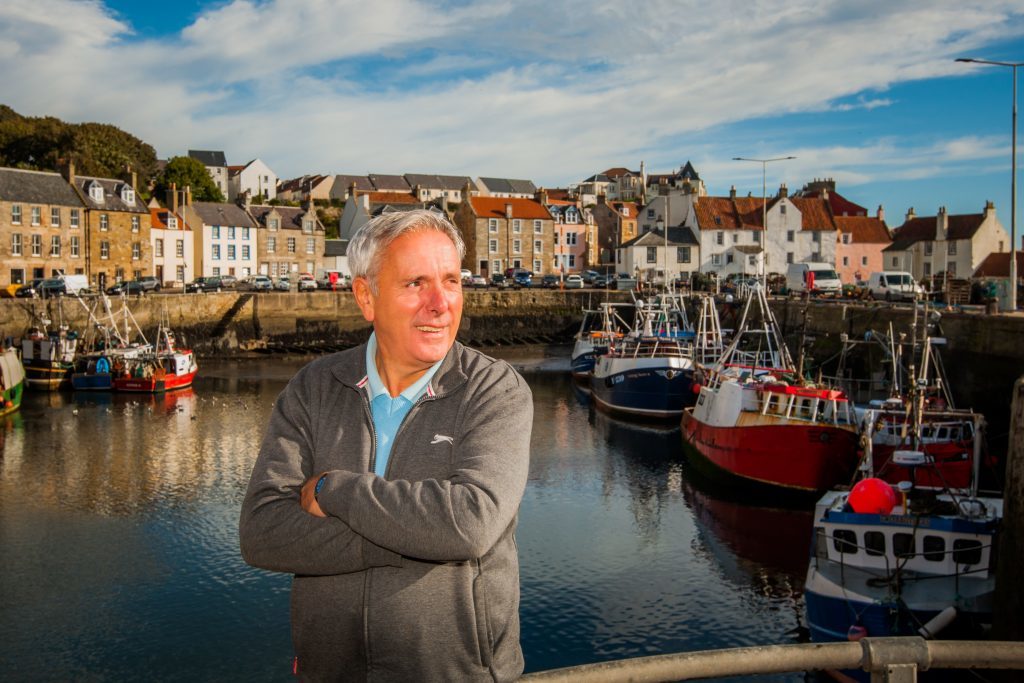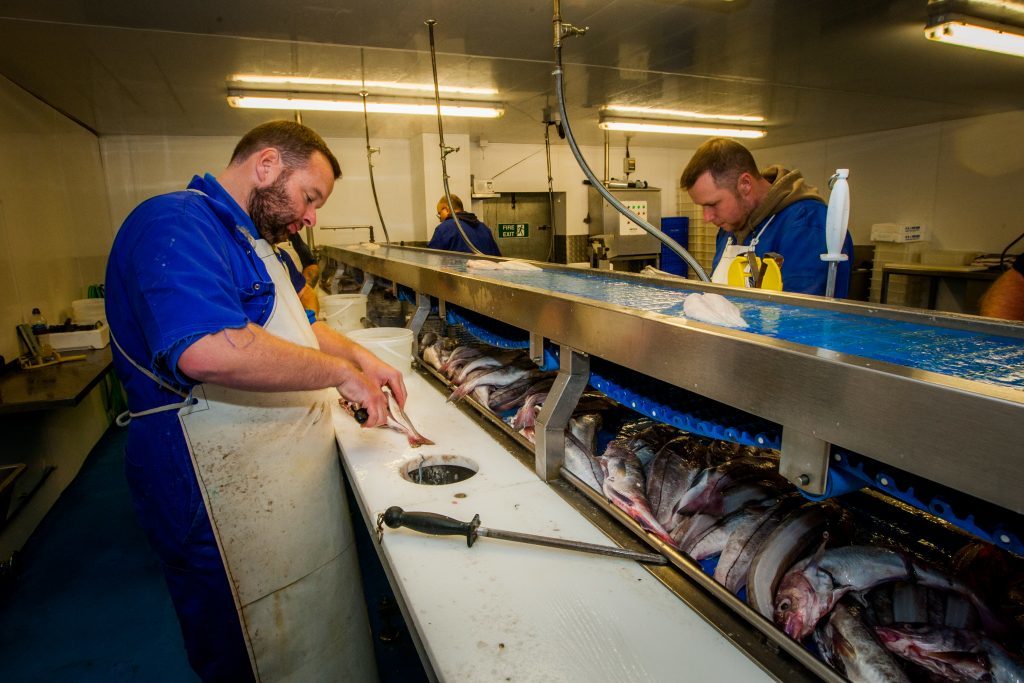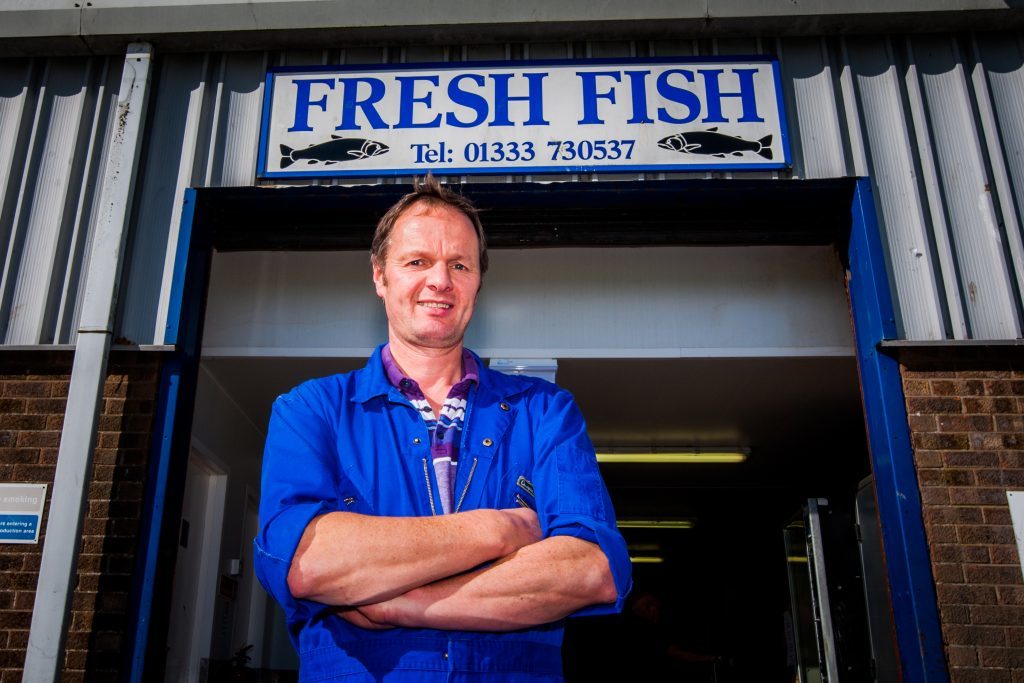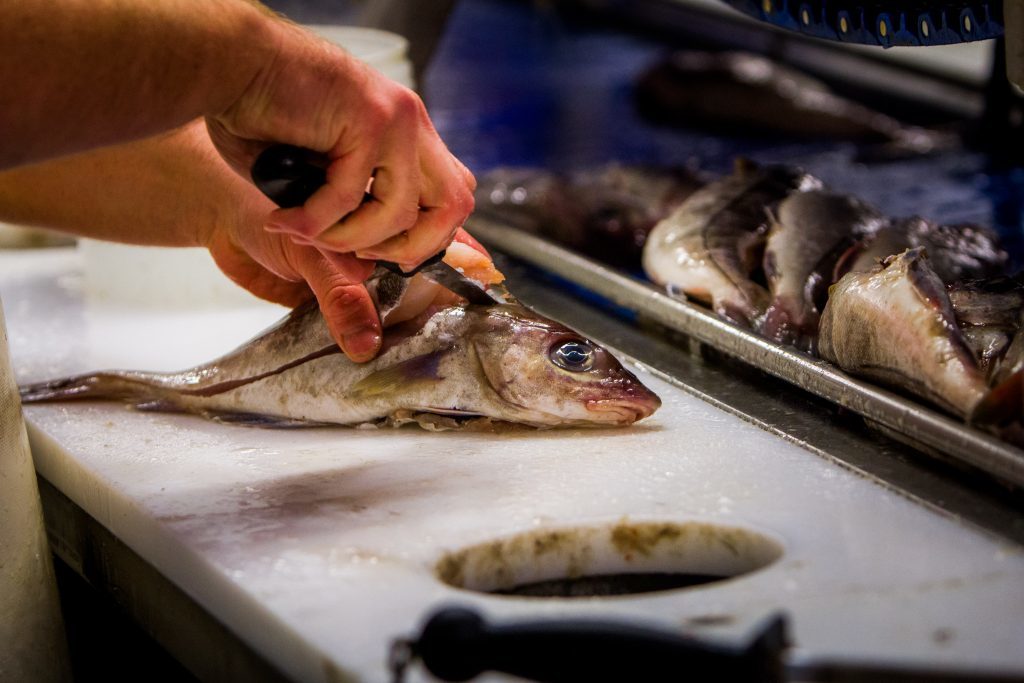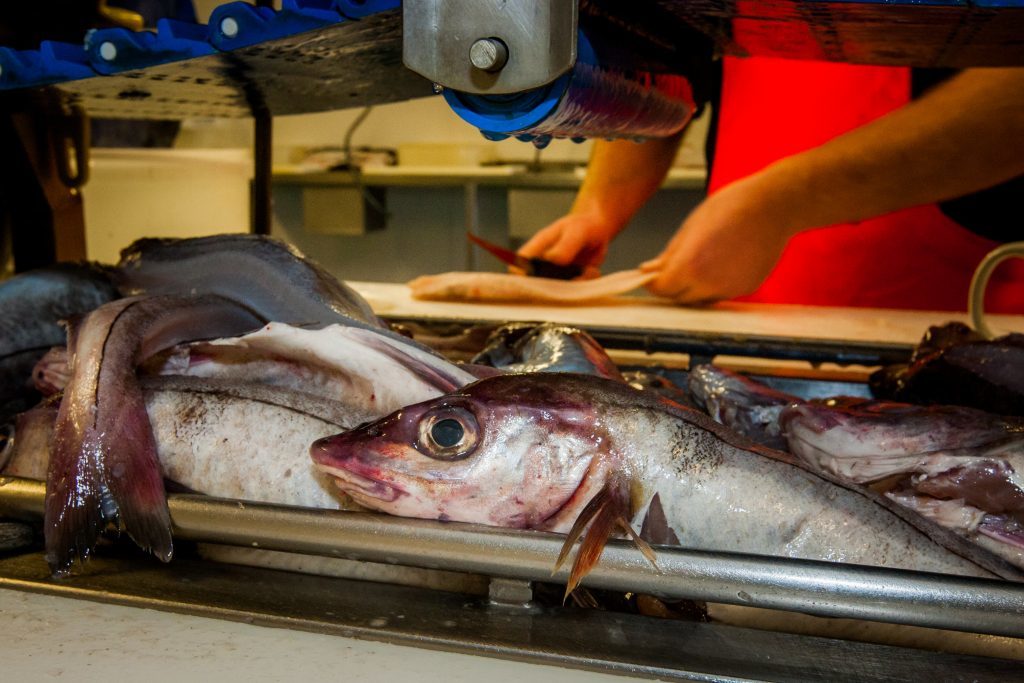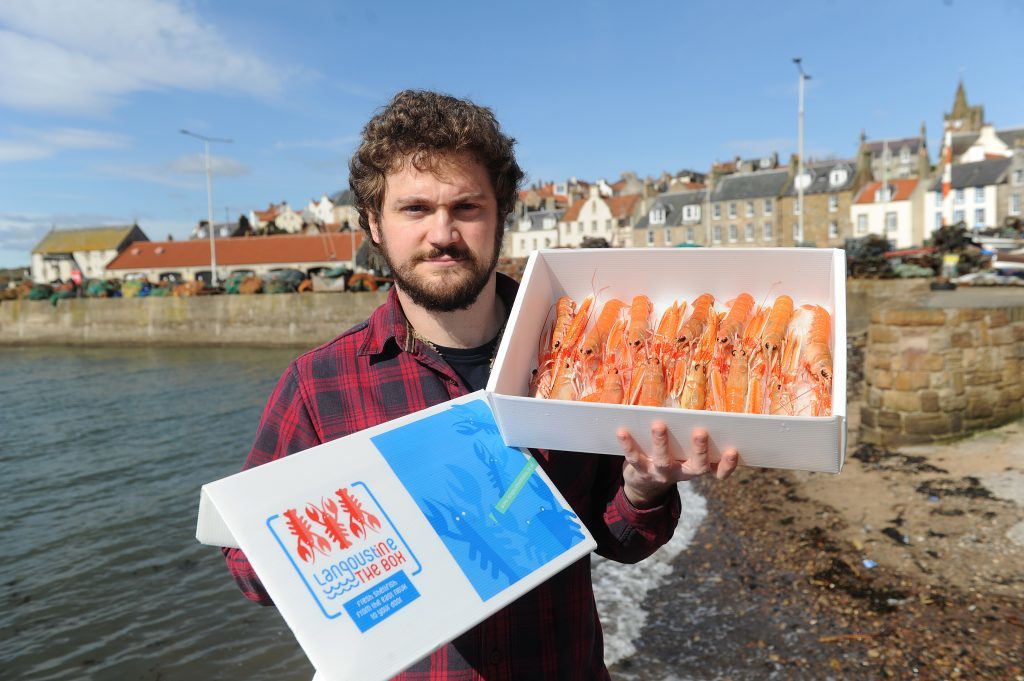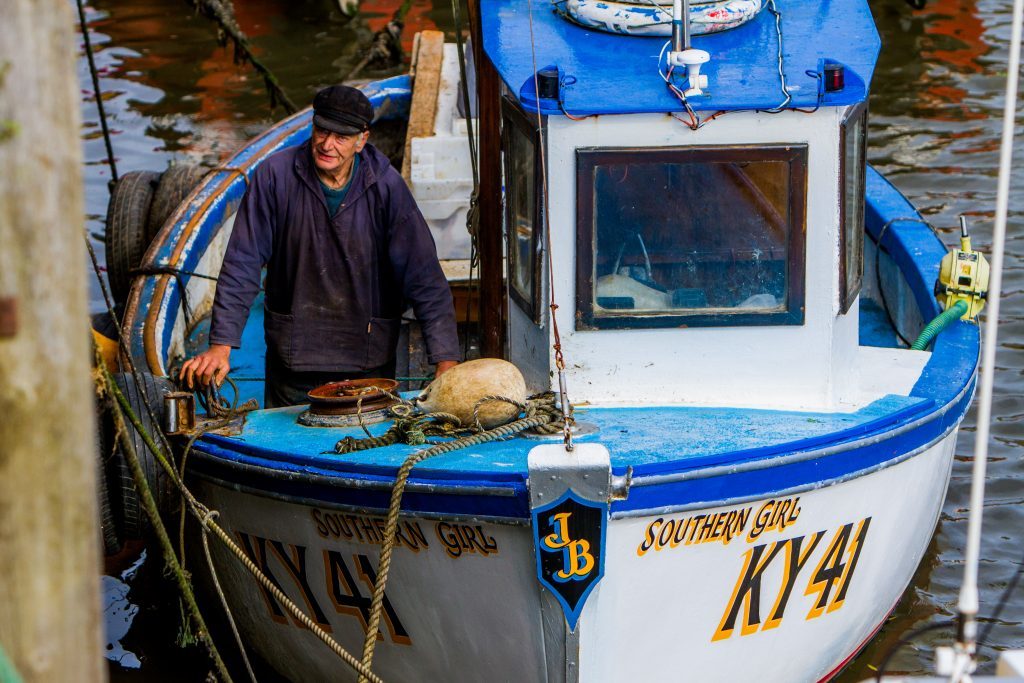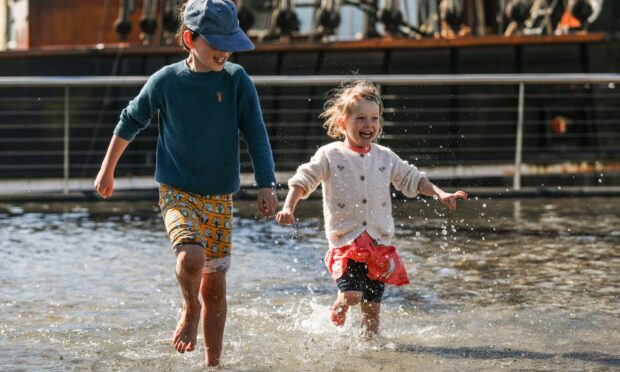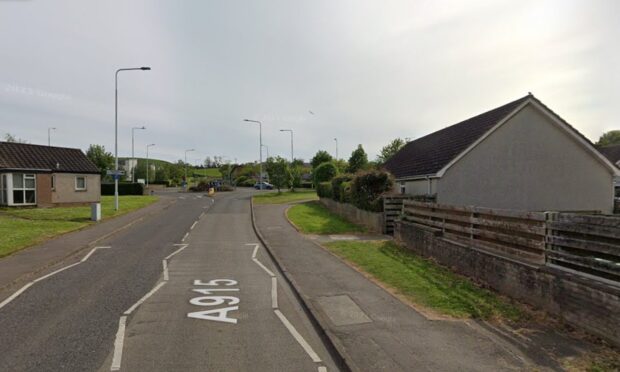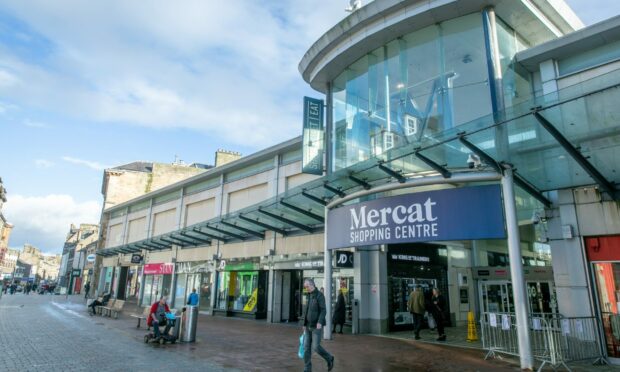The fortunes of Fife’s fishing industry may have fluctuated like the spring tides, and various challenges persist, but the sea continues to provide a living for many, discovers Michael Alexander.
With rain on the horizon, the gulls are wheeling in a fresh salty breeze as Jim Buttercase – the owner of the oldest creel boat at St Andrews Harbour – stacks some ropes on the quayside before sitting down on a lobster pot to light a cigarette and watch the world go by.
“The boats will be in within the hour,” says the 64-year-old nodding towards three specks bobbing out in St Andrews Bay – his weather beaten face testimony to a life time at sea that began when he was 16 and which has seen him make a living from his 45-year-old 23-feet long Christchurch-built vessel, Southern Girl, since it was almost new.
Forty minutes later, with the tide on the rise and under the watchful gaze of several Japanese tourists, the first of the creel boats chug into the harbour to unload its catch of the day – and it’s apt that the first in should be Brothers in Arms – the newest boat in the 10-strong St Andrews fleet.
Within minutes of tying up, the boat’s co-owner Colin Brown, 43, is helping crew mate Dave Martin, 63, haul several boxes of fresh lobster off the boat alongside a dozen or so creels that are then stacked on the harbour side.
The live catch will be weighed, taken to a wholesaler in St Monans where it will likely fetch £12 per kilo and then be shipped out for sale in Spain within four days.
“Today we’ve been down as far as Kingsbarns and along as far as the castle,” explains Dave, who’s worked in and around the harbour all his life, following in the footsteps of his father and grandfather – the latter of whom was a former St Andrews lifeboat volunteer.
“We bait the creels, the lobsters crawl in then we check the creels each day.
“St Andrews Bay is not a particularly good place to find lobster because it’s single ended. They live in rocks and once you get to the West Sands there’s no more until you get up near Arbroath. But there are plenty of them out there and fortunately the world thinks Scottish lobster is the best. Long may that continue!”
Another man hauling ashore his catch is Gordon Cation, 46, owner of the 21-feet creel boat the Leo and accompanied by his crewmate Kevin Richardson, 30.
Gordon, also born and bred St Andrews, has been fishing for seven years and is in the process of bringing his creels in before he goes away to work offshore for winter. The roughneck had taken a break from the rigs after damaging his shoulder in an accident but is now recovered.
“I’ve always had an interest in fishing,” he says.
“When I was young I always fished with rods down on the rocks so this is just an extension of that.
“My father was a fishmonger for years and I did sea fishing when I was younger.
“I’ll take these lobsters down to East Neuk Shellfish in St Monans.
“Every Monday he sends them to Spain in a lorry.
“Once we hand them over they are his. “He keeps them in tanks and they’ll be on tourists’ dinner plates in the Mediterranean within days.”
While the St Andrews creel fishermen operate as independents, down the coast at Pittenweem the harbour, which has been recorded as a port since 1228, there is home to around 40 prawn and creel boats which are represented by the Fife Fishermen’s Mutual Association (Pittenweem) Ltd (FMA) – the cooperative that sells and handles the produce landed at Pittenweem and generates revenues of around £3.5 million per year.
It’s 15 years since overfishing resulted in the last white fish being landed in the East Neuk.
Prawns, crabs, scallops, lobsters, clams and razor fish have taken their place.
The prawn boats operating out of Pittenweem mainly fish within 15 miles of the harbour, sometimes spending periods off the north-east coast of England or the west coast of Scotland.
Tom Mackenzie was appointed manager of the FMA in January last year and has spent his entire life working in the East Neuk fishing industry.
He says there’s an element of “craziness” whereby just about every piece of shellfish currently landed at Pittenweem is packed into lorries and goes to Peterhead or Mintlaw, Aberdeenshire, for processing and packing.
From there it is exported mainly to Spain, France and Italy – hardly ever being sold in Fife hotels or restaurants.
While he has been doing what he can to encourage local restaurants to take an interest in Fife-caught shellfish, he believes there’s still so much more that can be done.
“The place has totally changed in the 40 odd years I’ve been here,” says Anstruther-raised Tom, 61, whose late- father Sandy was skipper of the 50-foot Pittenweem-based vessel the Bright Ray.
“When I started selling fish at Pittenweem fish market at 16 in 1972 the industry was totally fish, and langoustine was thrown over the side because there was no market for it. In the ‘80s, fish was plentiful, close at hand – 1000 boxes a day was a poor day. But as every year went on they seemed to be getting 10 miles further off and 10 miles further off.
“Now even if the fishermen here were licensed to catch fish, which they are not, there’s barely any to be found anywhere between the Forth and Tay estuaries. There are no facilities for boats now in this area either. The nearest engineer is Arbroath. It’s all down to the changing costs of fishing. The prawn boats we have now have to be super- efficient.”
Tom said some still blamed Danish industrial sand eel fishermen for the decline of the East Neuk fleet. In the late 1990s the Danes targeted the Wee Bankie, off south-east Scotland. They were accused of indiscriminately hoovering up all sorts of fish, and became embroiled in confrontations with East Neuk vessels.
Yet with fish stocks still plentiful north and south of the Tay and Forth estuaries, one theory is that chemicals washing from fields into the estuaries could be to blame for the demise of fish stocks off the Fife coast, and he believes there should be a thorough scientific investigation into this.
It was a theory also put forward by the late-Pittenweem-based skipper John Bowman who increasingly reported “sores” on fish off Fife more than a decade ago. Investigations ceased after Mr Bowman died at the wheel of his vessel, the Unity, which went down off Ramsgate in December 2006.
G&J Wilson has been operating as a fish processor at St Monans for 31 years. And while no white fish is landed in the East Neuk anymore, owner James Wilson, 49, who has just bought out his brother George and employs 14 staff, including his wife Wendy, is very confident about the future.
He said: “Thirty years ago we used to go to Pittenweem, buy the fish, process it and sell it. Then we had to buy a lorry and go to Aberdeen to buy the fish. Since Aberdeen market closed around 10 years ago, we get it now from anywhere in Scotland – Peterhead, Kinlochbervie, Scrabster, Shetland. “Our 32-tonner lorry goes up to a transport hub in Aberdeen and picks it up there every day.
“We process around 80 boxes per day then sell it via our vans throughout Fife and also sell it to hotels, restaurants and chip shops including the Silvery Tay in Newport, Glenrothes, Lochgelly and Dunfermline. It’s mainly haddock but we also do hake, cod and lemon sole.”
It’s an optimism shared by Frenchman Clement Boucherit, 34, who has been packing boxes of Fife shellfish for his company Langoustine the Box since March.
He moved to Scotland three years ago with his partner Laure so she could take up a position as a researcher in environmental economics at St Andrews University.
The former farm business adviser got the idea for delivering locally landed langoustines, crabs and lobsters to customers in the East Neuk after a stint working at the FMA.
And now from his base at Bowhouse Farm, outside St Monans, he has ambitions to make the Scottish public more aware of the traditional fresh produce available around the Fife coast and wants to be delivering to many more restaurants in the years ahead.
